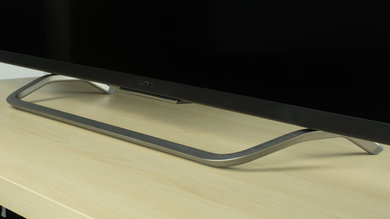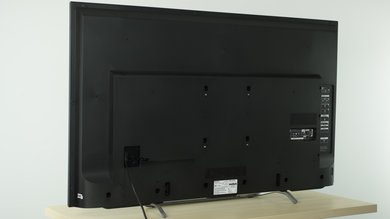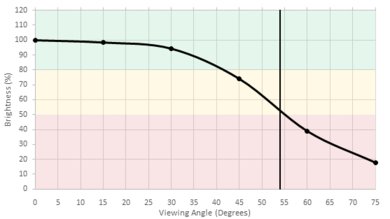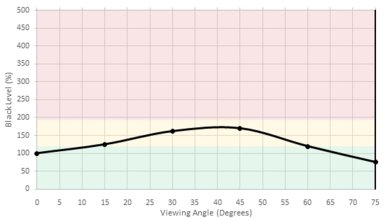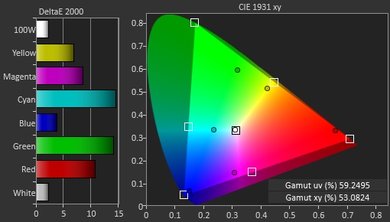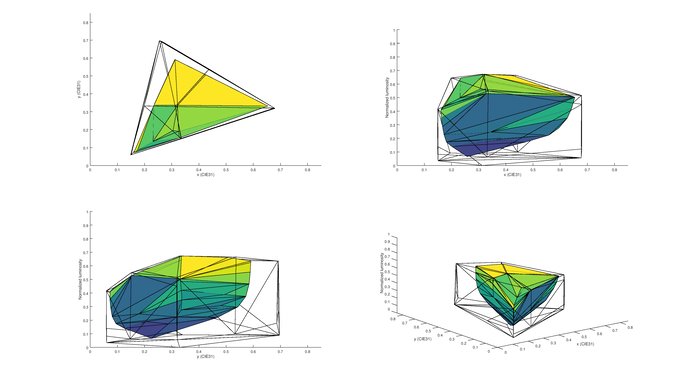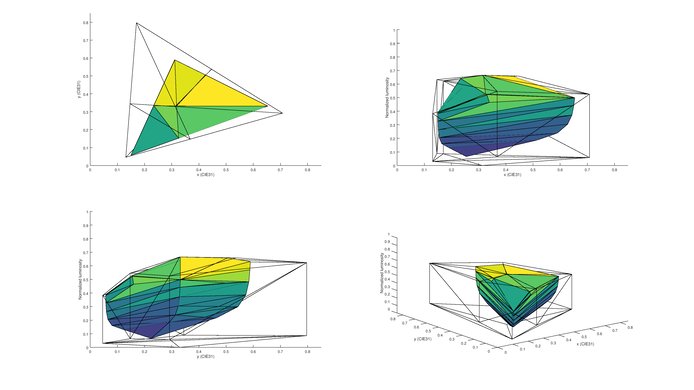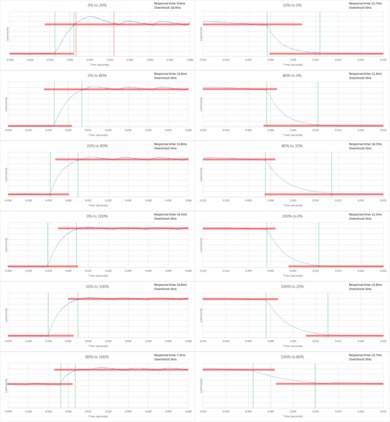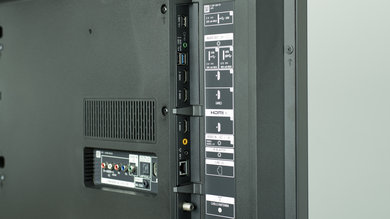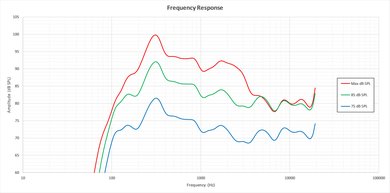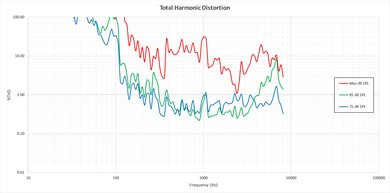The Sony X700D is a 4k LED TV, with slightly above average picture quality. It isn't good in a dark room due to the low native contrast ratio. On the upside, it can be enjoyed even from a wide angle, and it handles motion well. It also supports a wide range of inputs with low input lag which is good.
Our Verdict
Good TV for mixed usage. Picture quality is above average and remain the same even when seen from the side. It is more suited for bright room since the blacks are not that deep and tend to look more gray in a dark environment.
- Great color accuracy at an angle
- Low motion blur
- Poor blacks in a dark room
- Peak brightness could be better
Below average for watching movies in a dark room. The blacks are not deep and not very uniform and it doesn't have a local dimming feature to make it better.
Good TV for watching TV in a well lit room. Picture quality is slightly above average and remain the same even when viewed from the side. Upscaling of lower resolution content is good. It can deal pretty well with reflections and glare. The smart platform is easy to use and offers a lot of features.
Great for watching sports, since it has low motion blur. The wide viewing angle is great if you have friends over to watch a game. The uniformity could be better though.
Great for video games. It has a consistently low input lag no matter the source and the motion blur is great.
Supports HDR10 with newest firmware update. Average for HDR movies. Picture quality is slightly above average but does not have wide color gamut and local dimming feature to improve further the picture quality. Contrast ratio is very low making blacks appear gray when viewed in a dark room.
Good for HDR gaming. Picture quality is slightly above average, but no wide color gamut support. No local dimming to improve dark scene performance. Input lag is low, which is great.
Good as a computer monitor. Can accept a wide variety of inputs and supports a wide range of resolutions. Input lag is good and has a great response time. Support chroma subsampling at 4k @ 60Hz.
Check Price
Differences Between Sizes And Variants
We tested the 55" (XBR55X700D). For the most part, we expect our review to be valid for the 49" (XBR49X700D) and.
If someone comes across a different type of panel or if their Sony X700D doesn't correspond to our review, let us know and we will update the review.
| Size | Model |
| 49" | XBR49X700D |
| 55" | XBR55X700D |
Popular TV Comparisons

The Sony X700D is a good TV and a great choice if you need a wide viewing angle. If you are directly in front though, there are better alternatives.

We buy and test dozens of TVs yearly, taking an objective, data-driven approach to deliver results you can trust. Our testing process is complex, with hundreds of individual tests that take over a week to complete. Most of our tests are done with specially designed test patterns that mimic real content, but we also use the same sources you have at home to ensure our results match the real-world experience. We use two main tools for our testing: a Colorimetry Research CR-100 colorimeter and a CR-250 spectroradiometer.
Test Results
The X700D has the same design as the larger model X750D. It is similar to many of the Sony TVs released in 2015. It looks quite good, with all black plastic borders and a simple metallic stand.
The X700D doesn't support local dimming, but we have included the video for reference.
The SDR peak brightness is average for the Sony X700D. Since it does not have local dimming, all the different sized windows have the same level of brightness and at 450 cd/m² it should be good enough even for a bright room.
The peak brightness is better than average. There is no local dimming, so the result is the same across all window sizes and does not vary over time. The whole screen brightness is enough to deal with glare even in a bright room.
Update 10/20/2016: We have retested the peak brightness with the newest firmware update which enables HDR10.
The Sony X700D has an average gray uniformity. Both sides are a bit darker and there is also a warmer horizontal band in the middle of the screen. Even with this little imperfection, the screen is pretty even and dirty screen effect should not be too much of a problem.
Black uniformity is below average for an LED TV and is comparable to its bigger sibling the X750D. Even if there is a lot of clouding on our test picture, the clouding is pretty much even on all the screen and when viewing normal content, the picture quality is still good and you can't really notice it. That being said, we have seen a lot worse on other IPS TVs.
The calibration works well to fix issues with the white balance, by adjusting the 2 and 10 points method. There are still some issues with the colors which could not be fixed, but for most people this is not a problem. You can see our full picture settings here.
The Sony X700D does present some image retention. The retention is pretty strong and you can easily make out the original picture from the test video. Some retention is still present after 10 minutes of recovery, even if it is very faint. The image retention is not permanent, but is definitely lasting longer than on other IPS TVs.
This is one of the worse image retention that we have seen on a LED TV. The image retention will be visible after watching a TV show in 4:3, a letter box movie, a news TV show with a static banner and even sport channel with static scoring banner. Note that the image retention will fade completely with time.
Watching movies from a 24fps source such as a Blu-ray player is smooth. Those that are sensitive to judder will notice it when watching movies over a 60fps source such as cable TV, or a home theater PC.
Unlike the larger size X750D, the X700D has a 60Hz panel. It is only able to interpolate 30fps content. Those who like a strong soap opera effect will not be able to achieve it.
The 1080p input lag is quite low and is the same as the X750D, which is great. For most people, this will not be noticeable when playing game. To get the lowest input lag, set the picture mode to 'Game or 'Graphics'. The input lag stays low even in 4k.
Update 10/20/2016: We have retested the input lag with the newest firmware update which enables HDR10.
Like the Sony X750D, the X700D can display Chroma 4:4:4 at 4k @ 60Hz only on the HDMI port 2 and 3 and you need to switch the 'HDMI signal format' to 'Enhanced format'. When the picture mode is set to 'Graphics' or 'Game' the input lag is 31.4ms.
The TV doesn't support HDR10 at time of the review, but is planned to support it in the future with a firmware update.
Update 10/20/2016: The review has been updated with the newest firmware which enables HDR10.
Decent performance. Frequency response and maximum loudness are above average, however pumping and compression will be present under heavier loads, and the TV doesn't produce a lot of bass either.
Poor distortion performance. The amount of harmonic distortion at 75dB and 85dB are low. There was audible aliasing present even at 85dB. However, aliasing starts to creep in at volumes louder than 85dB. At 100dB there's a dramatic jump in the harmonic distortion, which is typical of most Sony TVs. However, these artifacts will be less audible in real-life situations.
The X700D includes the latest Android TV version (6.0.1 Marshmallow). There is a huge variety of content available, due to access to the Google Play Store. It is very stable and works well. The home screen is a bit confusing to navigate though. After turning on the TV it does take a while to load, but after a few minutes this is not an issue. There are 3 USB ports on the TV, and the Android OS is able to play content directly off USB flash drives.
While no ads appear on this TV, apps and featured content are shown on the main page.


